Ice age mining camp found 'frozen in time' in underwater Mexican cave
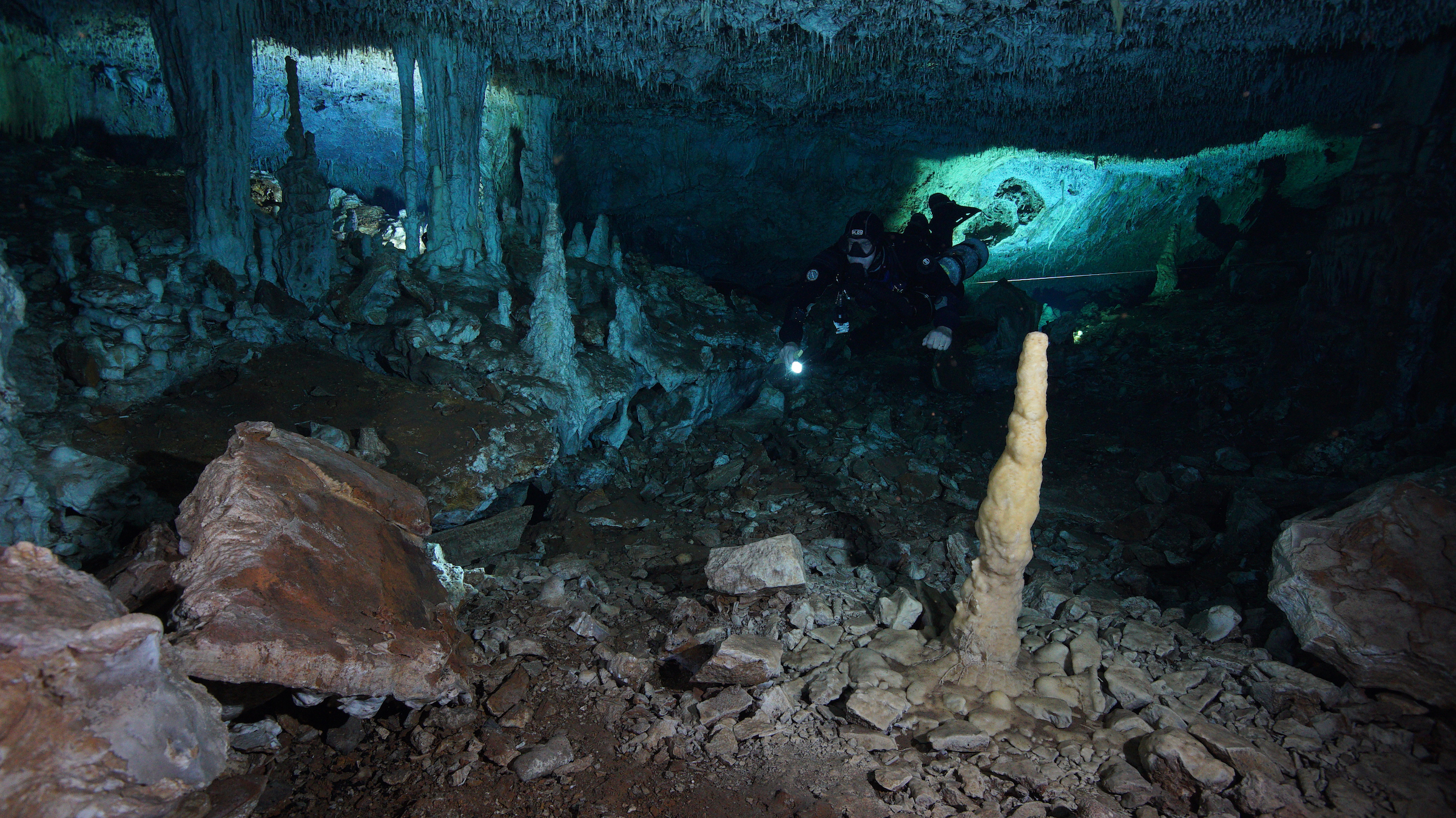
At the end of the last ice age, Indigenous miners in what is now the Yucatan Peninsula, Mexico risked life and limb — venturing into pitch dark caves illuminated only by fire — to extract a prized mineral, a new study finds.
That mineral wasn't gold or diamonds, but red ochre, a valuable crayon-like pigment that prehistoric people used for both ritualistic and everyday activities, including rock paintings, burials and possibly even insect repellent.
No one knows, however, how the Indigenous people of the Yucatan Peninsula used ochre. After Indigenous people mined the caves, between about 12,000 and 10,000 years ago, the caves flooded as the ice age ended and sea levels rose. But the still water in the caves preserved the miners' camps — even the charred remains of their fires — allowing archaeologists to see exactly how the mineral was extracted.
Related: Photos: Oldest known drawing was made with a red crayon
The site is basically "a time capsule underwater," study lead author Brandi MacDonald, an assistant research professor in the Archaeometry Laboratory at the University of Missouri Research Reactor, told Live Science. "It's a really rare opportunity to get to see something with such amazing preservation."
Cave divers discovered the ancient mining camps in April 2017, after study co-author Fred Devos, a diver with the Aquifer System Research Center of Quintana Roo (CINDAQ), a local conservation group, discovered a previously undocumented passageway in the Sagitario cave system.
The underwater passageway led the divers to a spectacular array of ice age mining artifacts, including tools, mining pits and stone markers, likely left so the miners wouldn't get lost in the dark labyrinth. After inviting study co-researcher Eduard Reinhardt, geoarchaeologist at McMaster University in Canada, to join them on a dive, the groups' understanding of the cave's history clicked into place, said study co-author and CINDAQ founder Samuel Meacham, who accompanied Devos on the first dive through the mysterious passageway.
Sign up for the Live Science daily newsletter now
Get the world’s most fascinating discoveries delivered straight to your inbox.
Meacham and his colleagues have spent the past 25 years diving in the cave systems in Quintana Roo. Scientists know that these caves were explored almost as soon as humans inhabited the region, because divers have recovered human skeletons from several of the caves, including at Hoyo Negro and Chan Hol Cave, said Mark Hubbe, a professor of anthropology at The Ohio State University, who was not involved in the study. But some of the findings defied explanation.
"Over the years, we have seen these anomalous weird things within caves that we couldn't quite explain — rocks out of place, rocks stacked on top of each other, things that just didn't seem natural. But we didn't have a really good explanation," Meacham told Live Science.
Now the divers and archaeologists have at least one explanation. After connecting with a group of archaeologists — a partnership that blossomed as the cave divers took thousands of photos and collected samples for the scientists — the evidence was overwhelming that these sites were mines. In essence, prehistoric people were prospecting for and mining ochre in the caves, and they were making tools out of whatever appropriately-sized rocks they could find along the way, including broken-off stalactites from the ceiling and stalagmites from the floor, which the Indigenous people used to hammer, chip and smash away the flowstone (sheetlike mineral deposits) that covered the ochre.
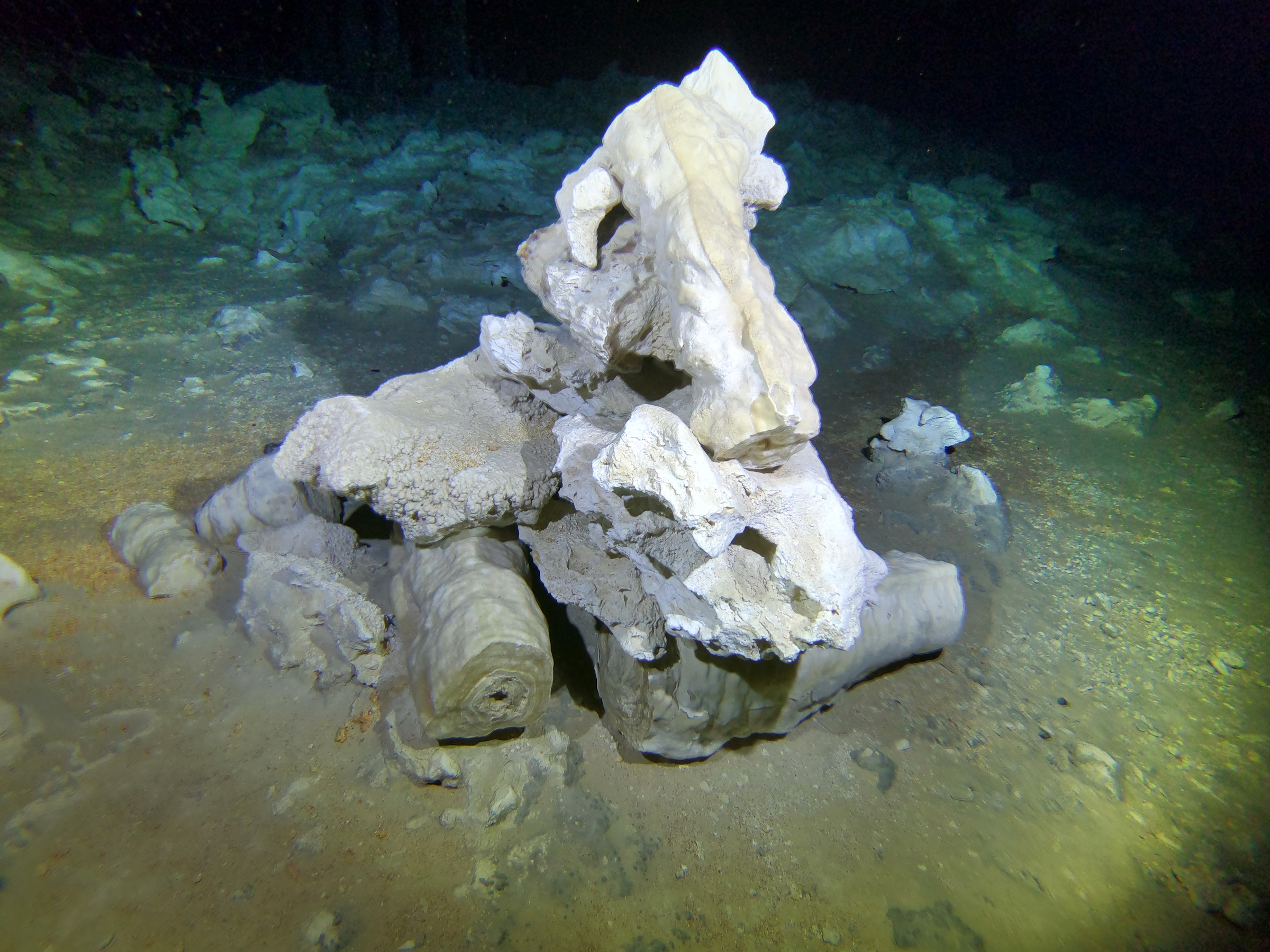
Photo gallery (12 images)
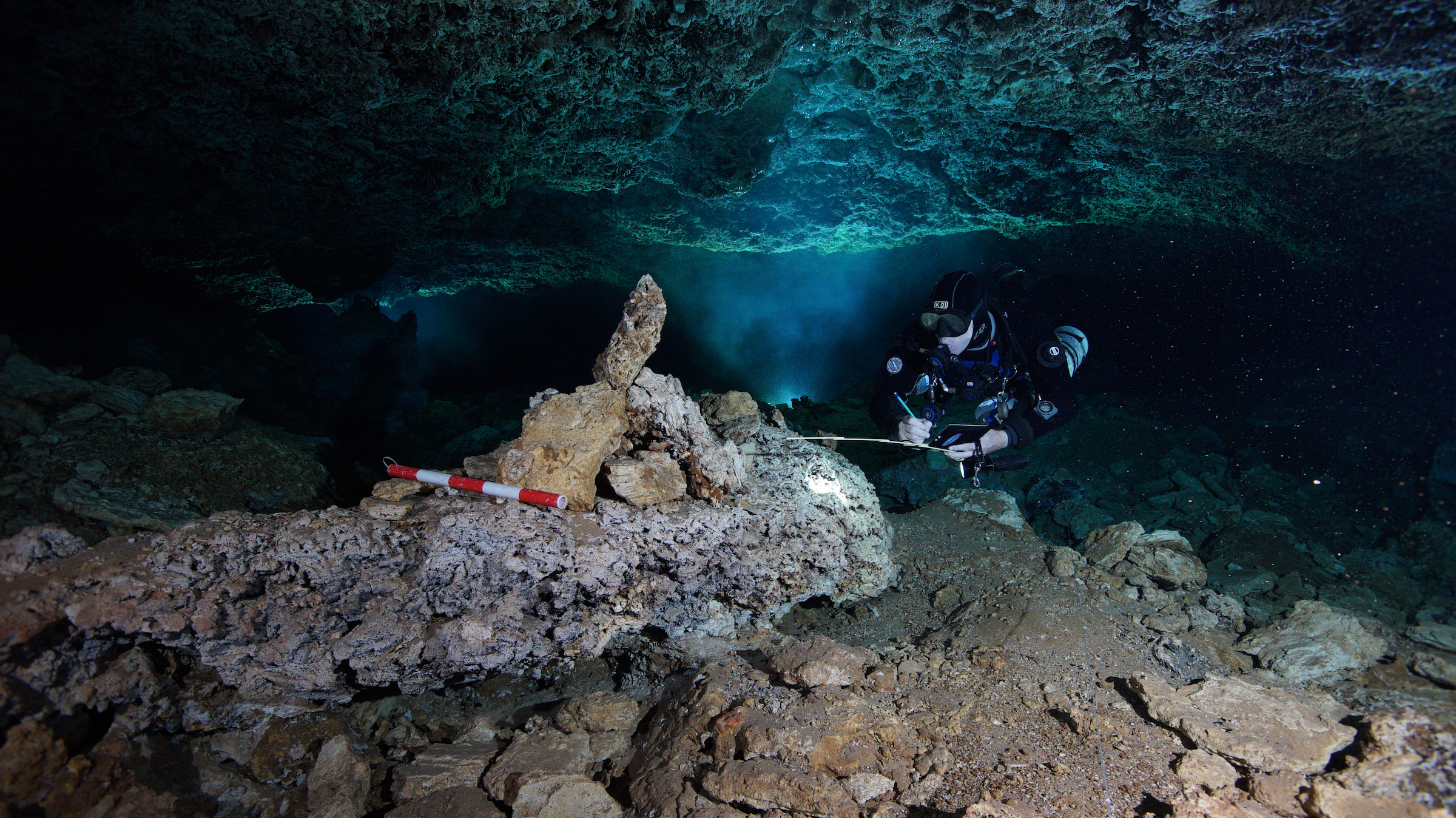
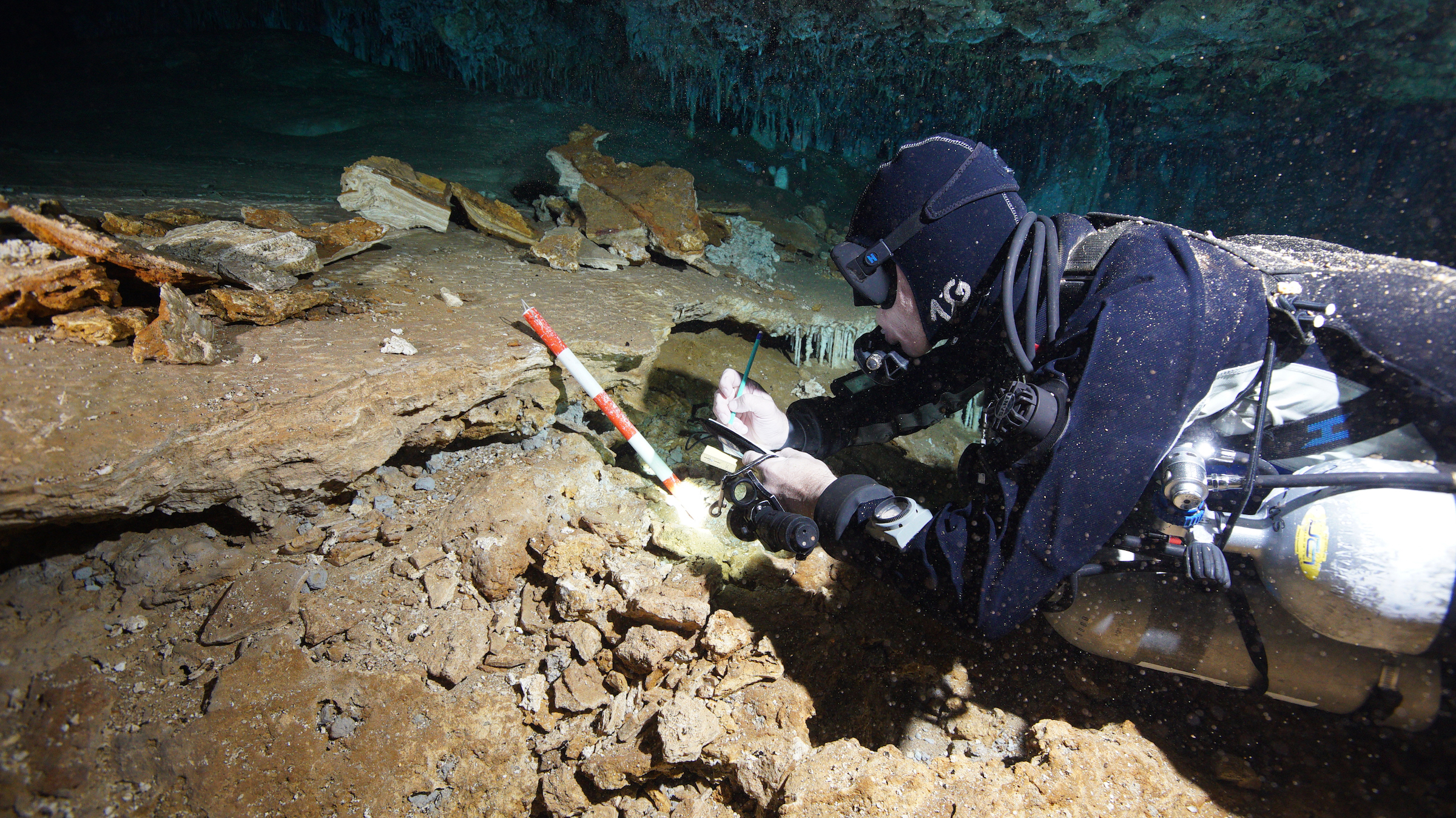
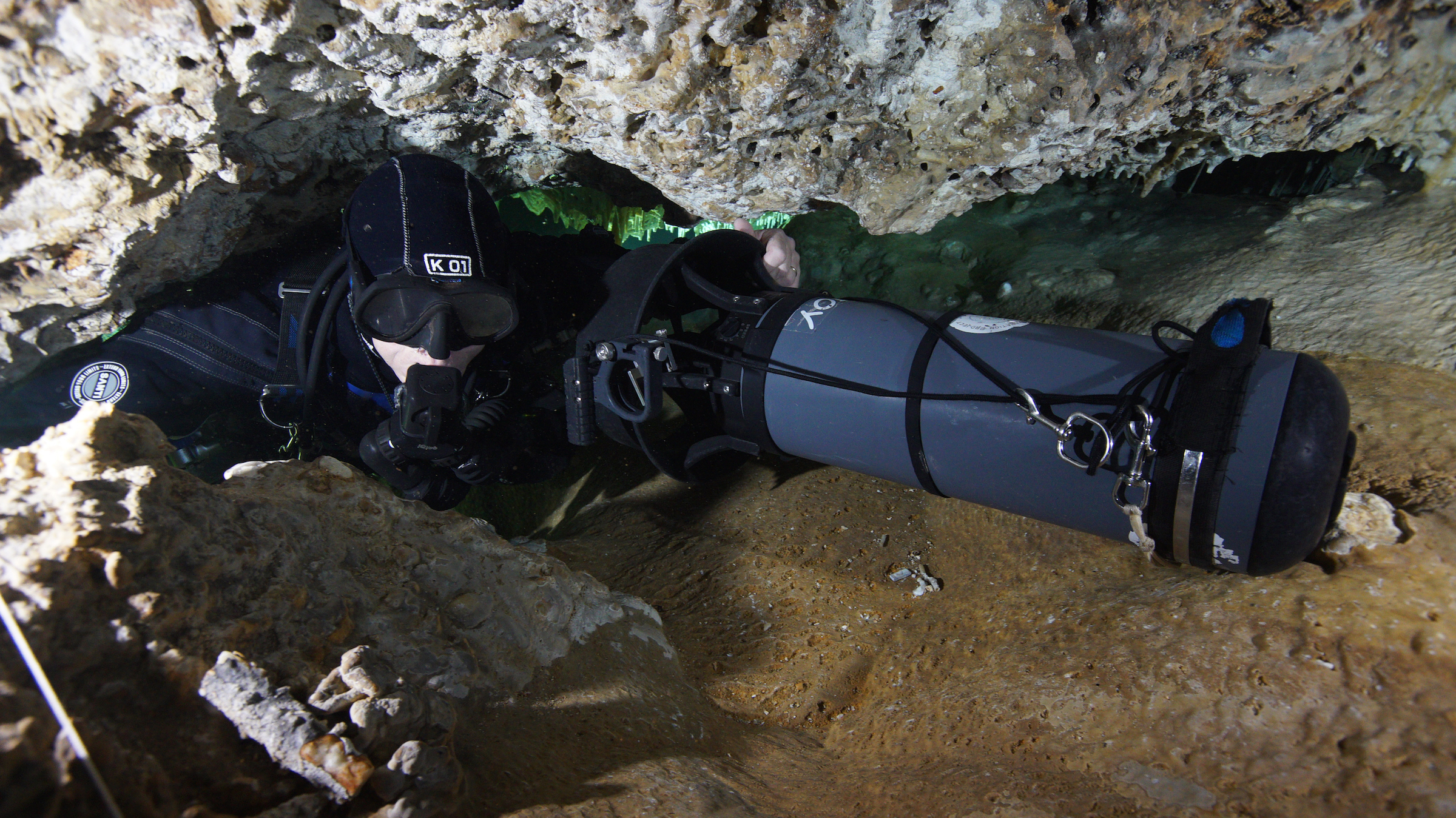
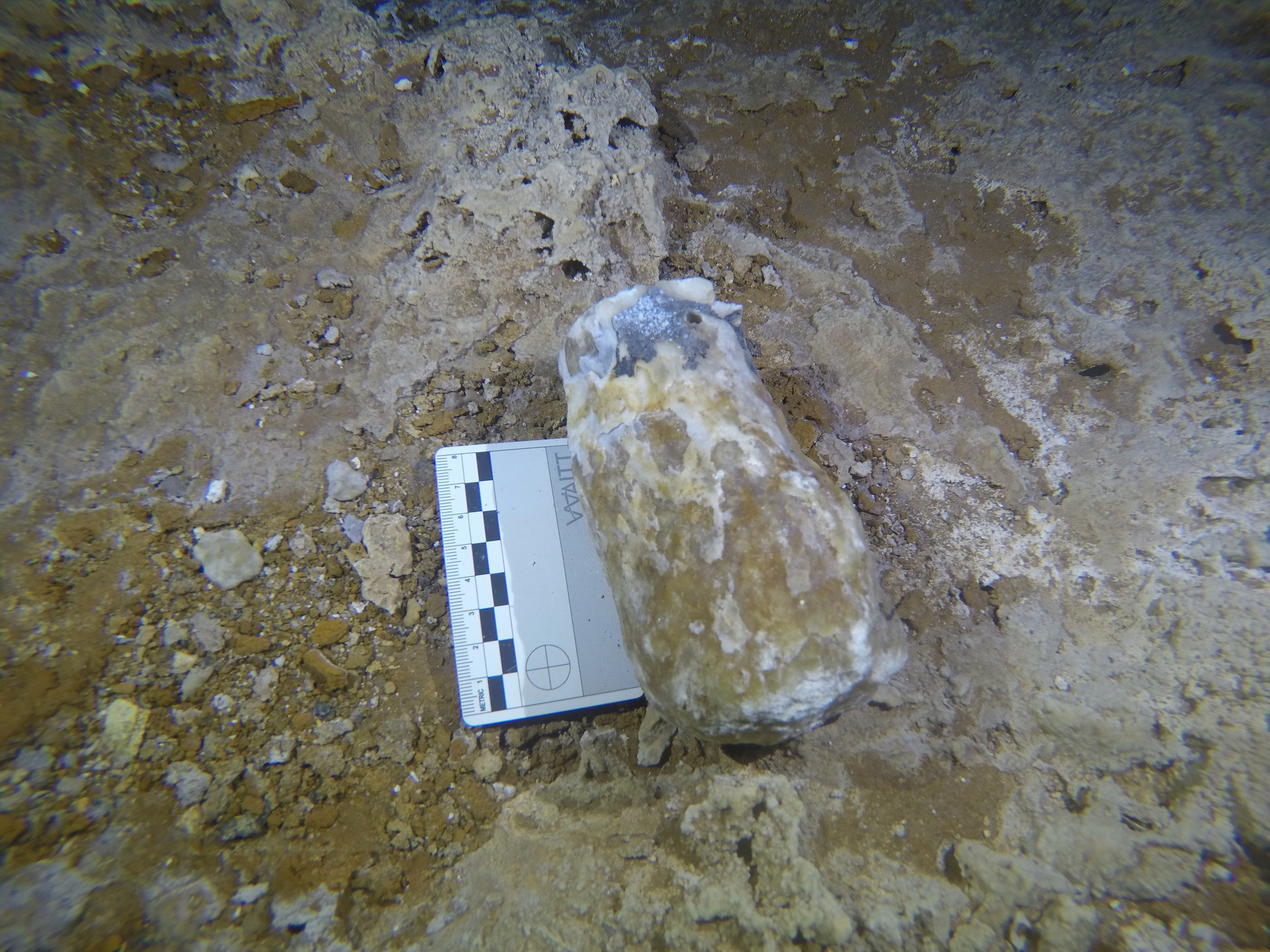
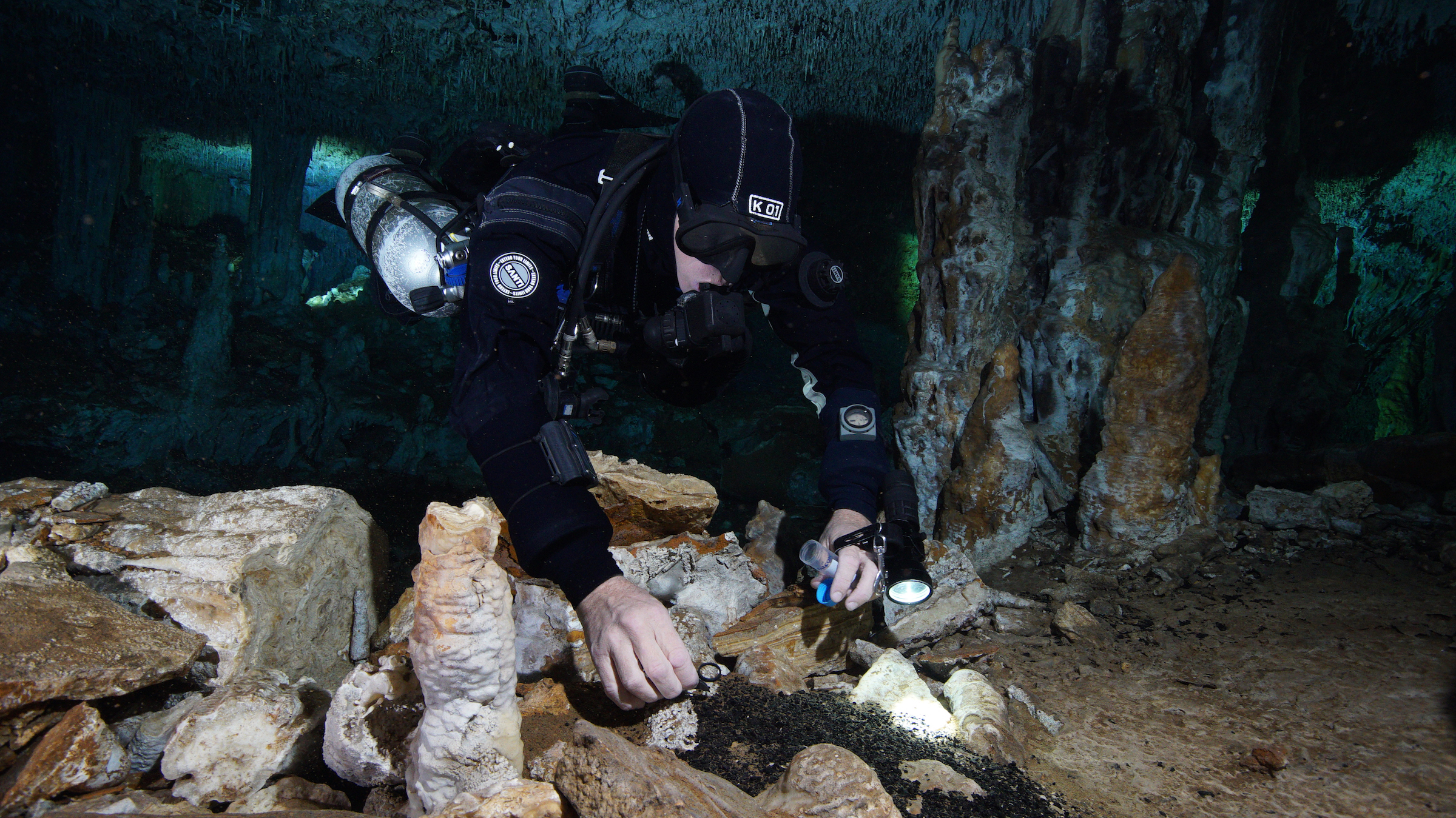
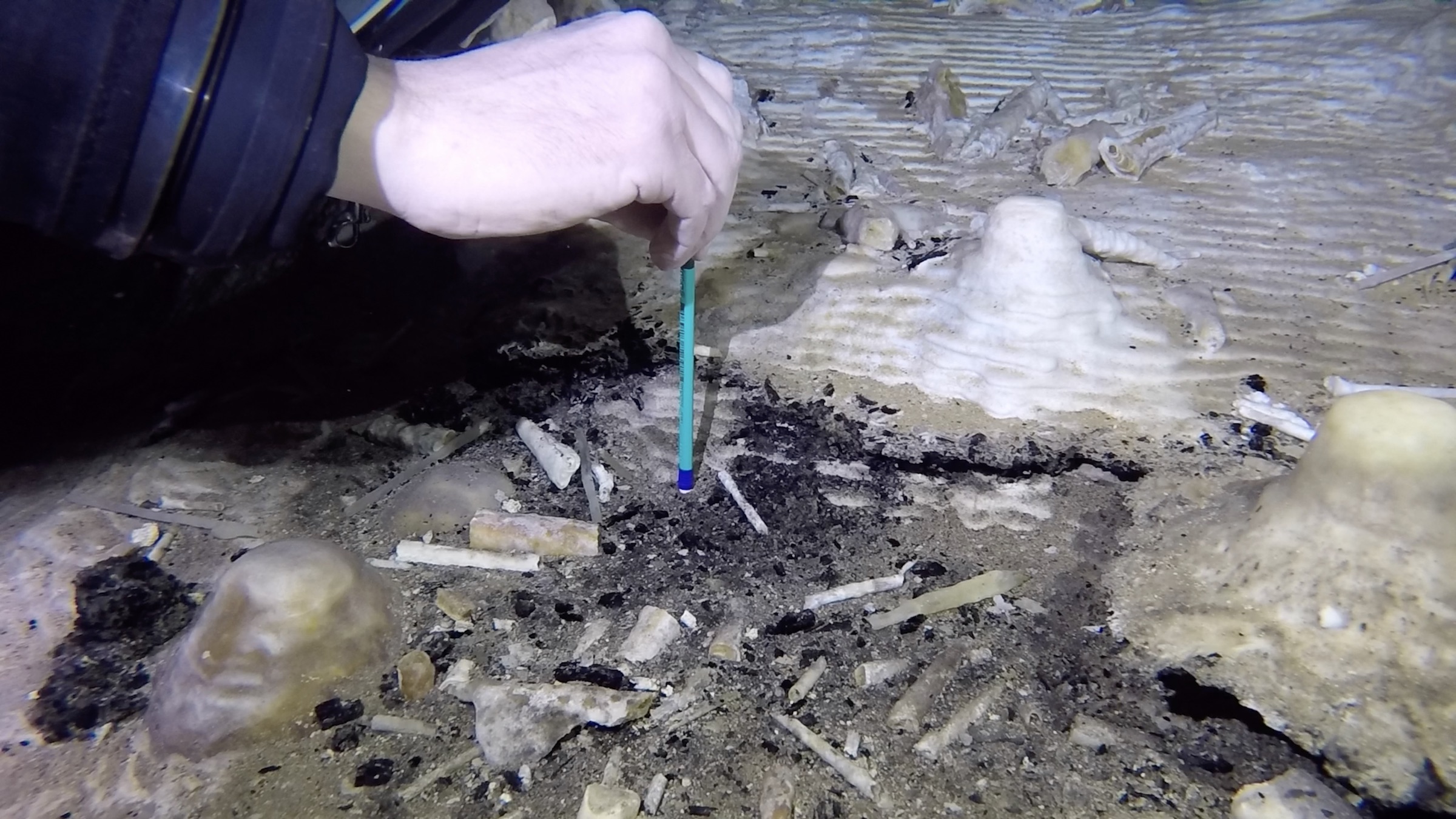
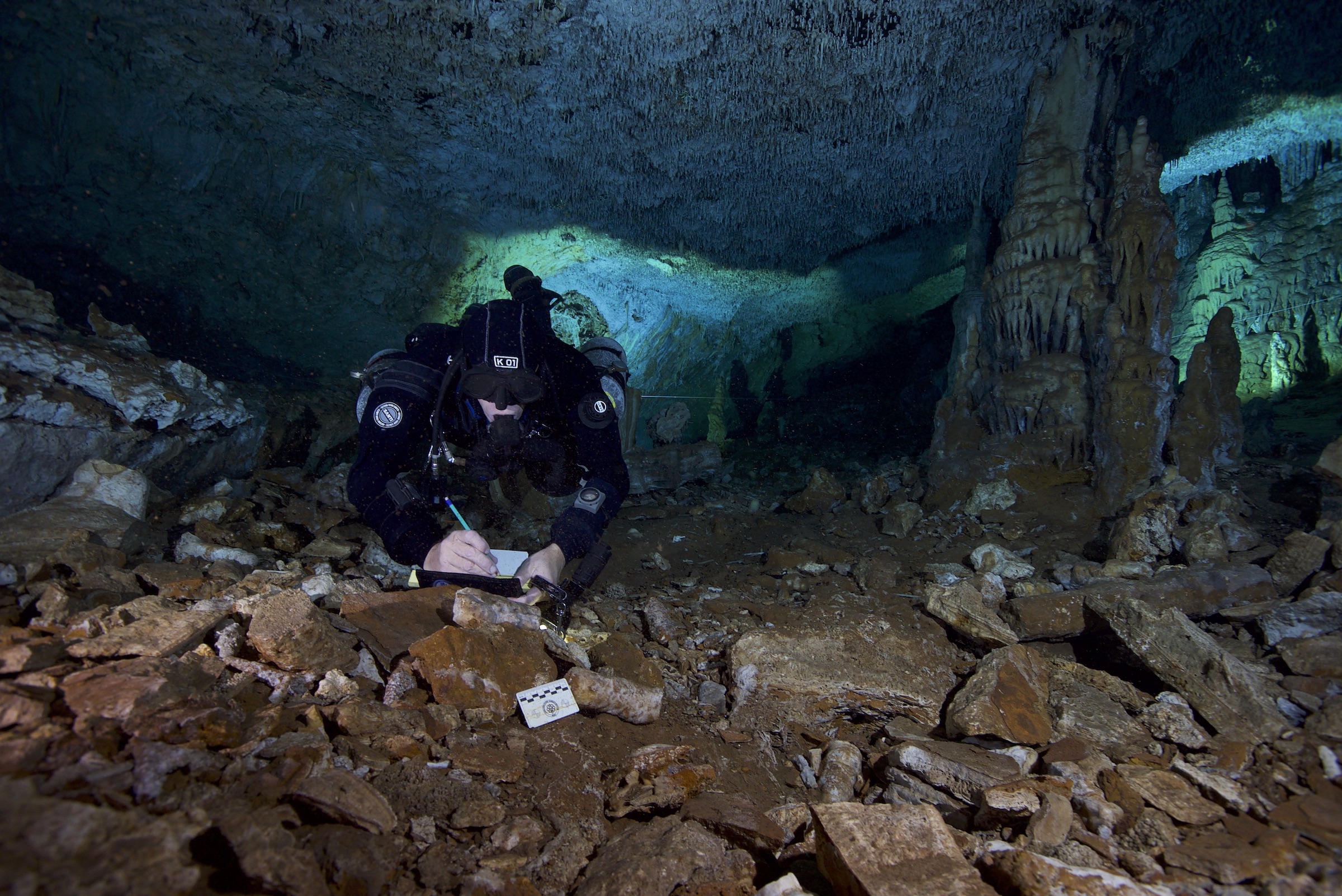
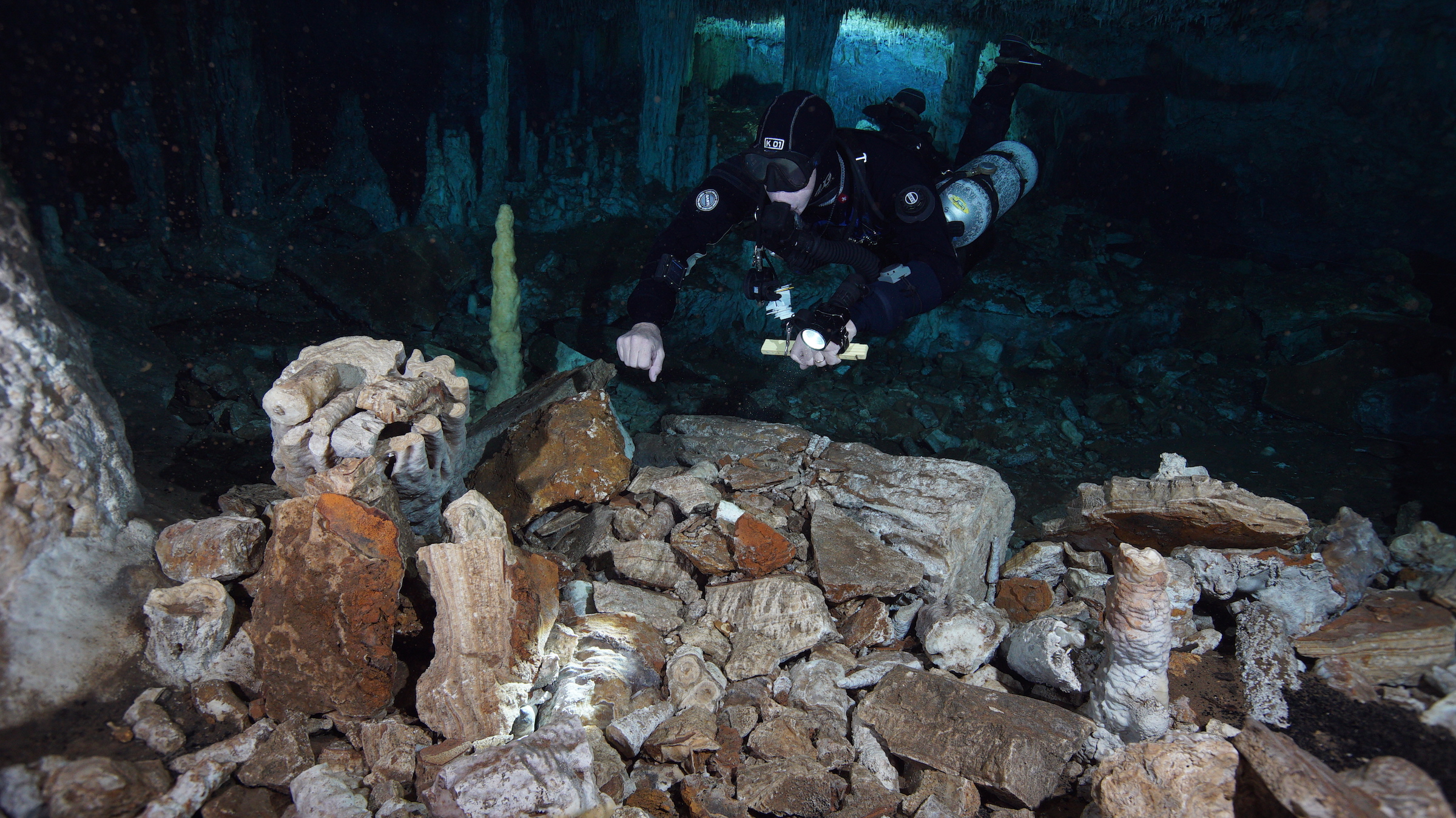
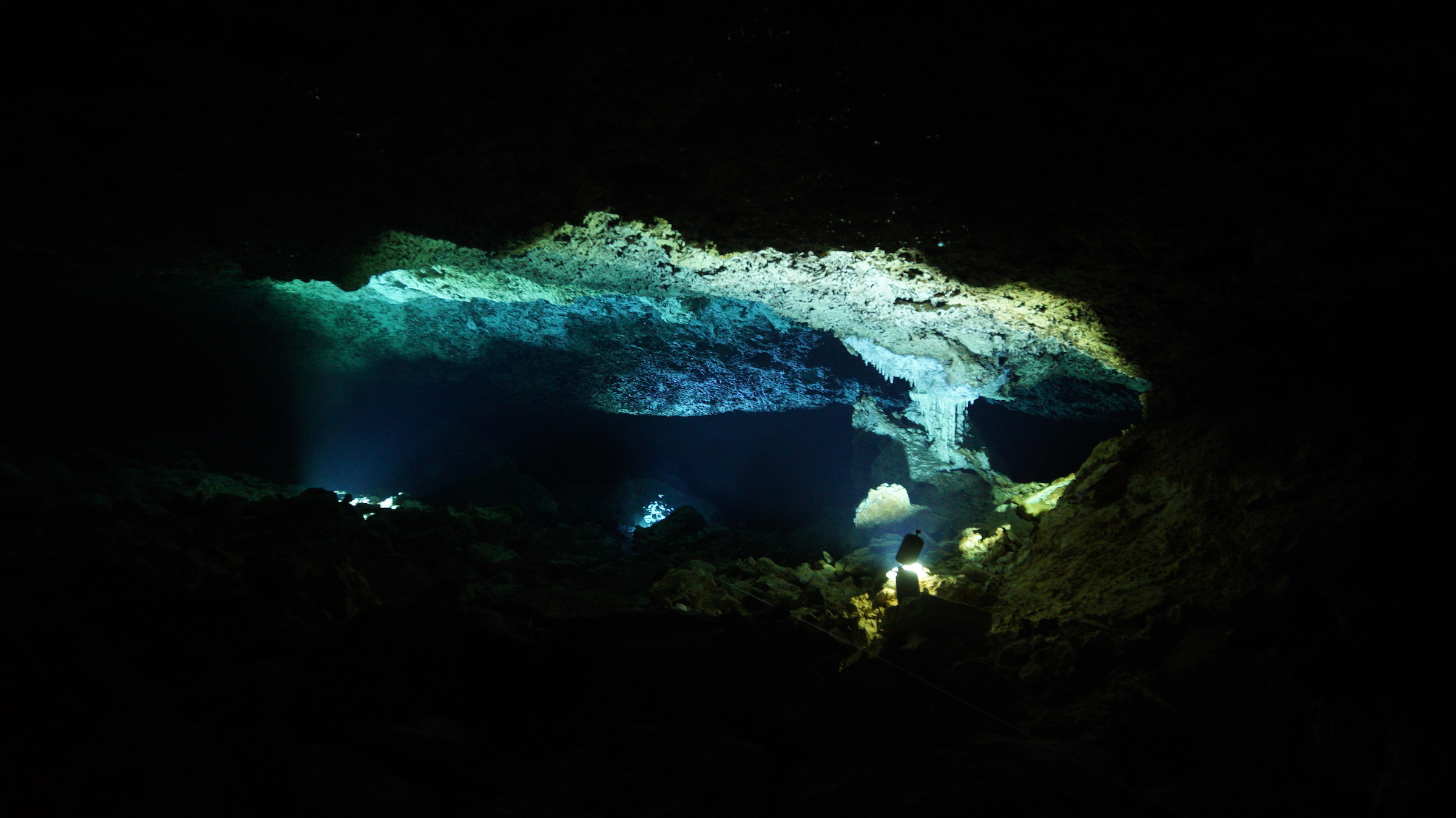
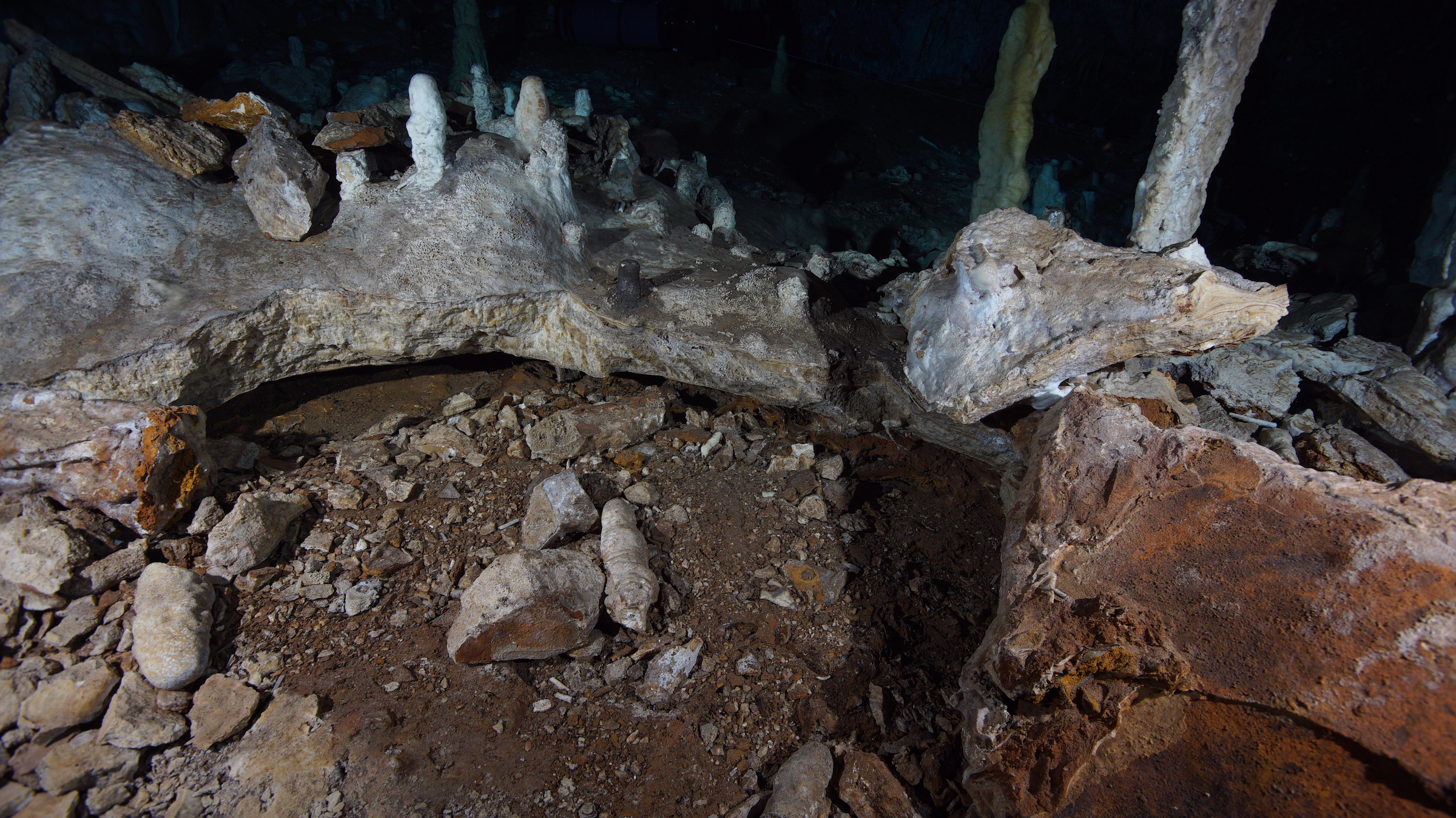
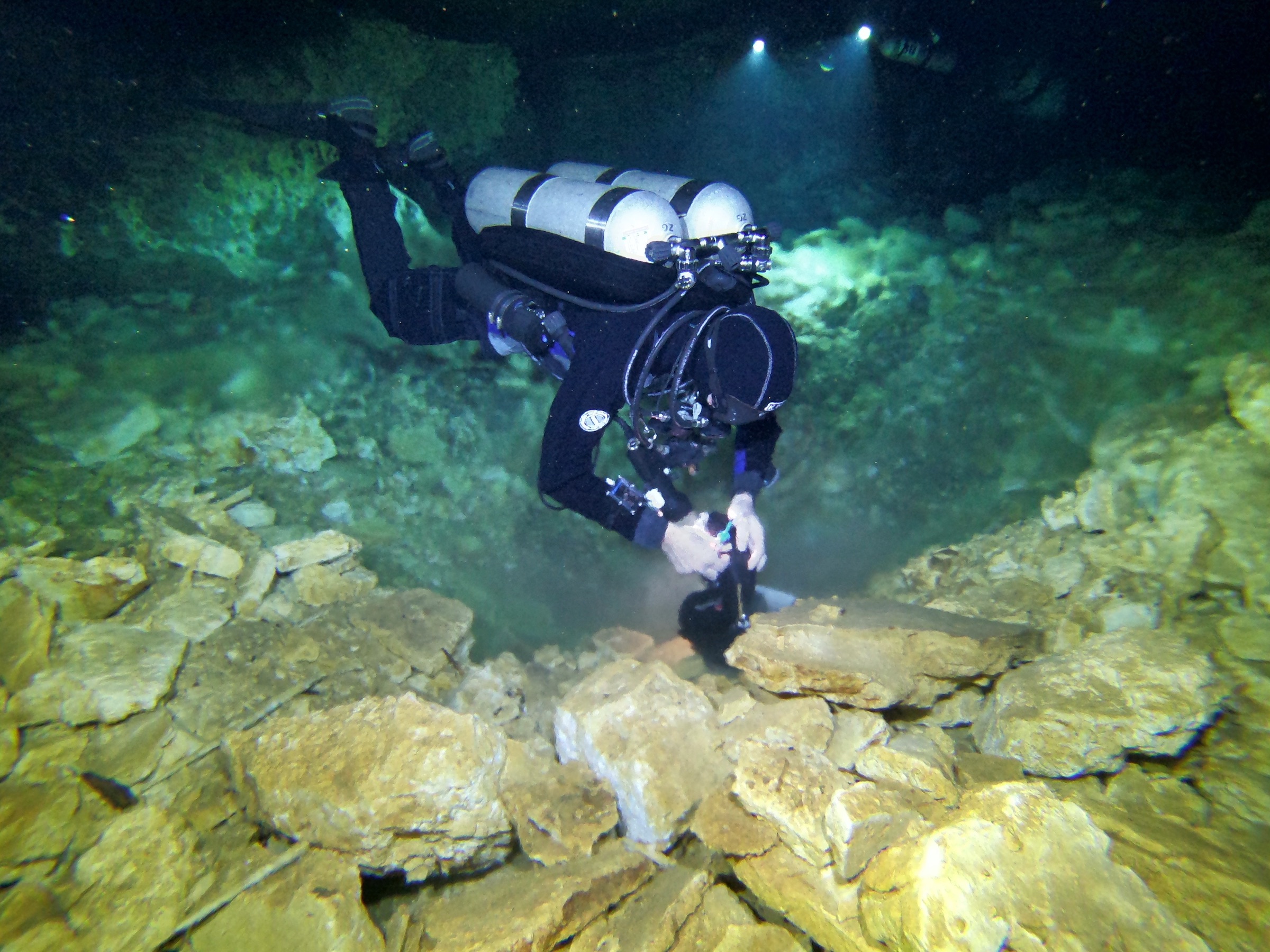
Mining for ochre
The caves may be underwater now, but from about 21,500 until about 13,000 to 8,000 years ago, the Camilo Mina, Monkey Dust and Sagitario cave systems were dry and walkable. Even so, entering them would have been perilous. At La Mina ("the mine" in Spanish), Indigenous people would have walked down "naturally darkened passages, encountering overhead hazards and narrow restrictions well into the dark zone of Sagitario, up to at least 650 meters [2,132 feet] from natural light," the researchers wrote in the study.
Related: Photos: Diving for ancient offerings in Lake Titicaca
The divers retrieved samples of ochre, calcite rafts (lacelike crystals that form in still waters) and charcoal for the scientists to analyze and date. The ochre contained high-purity iron oxides, meaning it could make a vibrant, fine-grained red pigment, the researchers found. The team dated the mining activities using radioactive carbon in the charcoal, examining the presence of the calcite rafts that formed after the mining events, and consulting the sea-level rise record. These methods indicated that Indigenous people had mined the western part of the cave system from about 11,400 to 10,700 years ago, just as the Pleistocene epoch was transitioning to the Holocene epoch.
"To me, that says that there's some degree of intergenerational knowledge being passed down. There is continuity of practice," MacDonald said. Mining happened in at least two other locations in the cave system, so it's even possible that mining was practiced on a regional space, she noted.
Why mine at all?
While it's unclear how the Indigenous people used the ochre, previous studies have suggested that the mineral served as an antiseptic; a sunscreen; as something to eat; and as tick or lice repellent. It may also have been used for hide tanning, tool building and for purging parasites.
The ochre from La Mina and Camilo Mino was high in arsenic, approaching 4,000 parts per million (ppm), "which is quite a bit, as far as ochre goes," MacDonald said. That ratio is much higher, for instance, than the 10 parts per billion of arsenic that the U.S. Food and Drug Administration allows in bottled water. However, arsenic, a neurotoxin, is known to repel pests, so perhaps that's a clue to how it was used, MacDonald said.
"For all we know, maybe they're just mining a whole bunch of bug repellent," she said.
Whatever the reason, the study shows that "early human groups in the Americas were already engaged in complex activities that went much beyond their own survival," Hubbe told Live Science in an email. "The mining of ochre from the caves suggest[s] that there was an important social meaning to this mineral and, even though we cannot really say what they were using this material for at this point, it does show it was immensely valuable and important for them."
The study was published online July 3 in the journal Science Advances.
Originally published on Live Science.

Laura is the archaeology and Life's Little Mysteries editor at Live Science. She also reports on general science, including paleontology. Her work has appeared in The New York Times, Scholastic, Popular Science and Spectrum, a site on autism research. She has won multiple awards from the Society of Professional Journalists and the Washington Newspaper Publishers Association for her reporting at a weekly newspaper near Seattle. Laura holds a bachelor's degree in English literature and psychology from Washington University in St. Louis and a master's degree in science writing from NYU.










